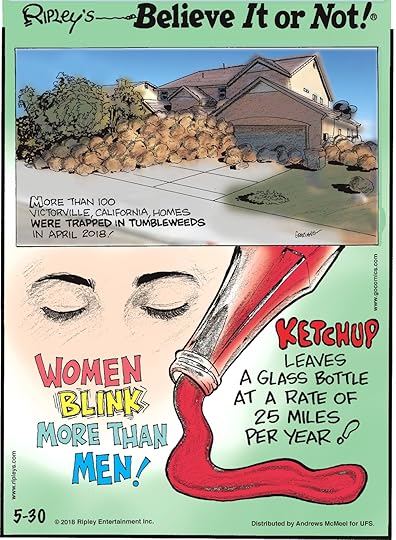Ripley Entertainment Inc.'s Blog, page 340
June 2, 2018
CARTOON 06-02-2018
June 1, 2018
The Nazis’ Attempt At Jurassic Park, Was It Possible?
Featured in Ripley's Believe It or Not!

Ever since the novel came out in 1990, and the movie of the same name debuted three years later, humanity has been awed by the sheer power and destructive forces of the dinosaurs in Jurassic Park.
(If you don’t know the story, it centers on scientists and business people who team up to recreate dinosaurs by finding their DNA inside mosquitos who’ve been trapped for millions of years in amber. Because the strands of DNA are incomplete, the scientists replace the missing parts with frog DNA and start hatching baby dinos. Their goal? To make buckets of money by showing off the dinosaurs in a theme park. As you may guess, this results in chaos. And… scene.)
It was a brilliant idea, parts science fiction and science fact, with just enough plausibility that it could be believable. After hearing the story, many fans were left wondering: Could scientists really find old DNA and use it to create an animal that had been long dead?
Even more so, have scientists already tried something like this? The answers, crazy enough, are yes and no.
Dino DNA
The problem, it seems, lies in the misplaced theory that DNA could survive all that time. Not so, say experts. DNA will only be readable for about 1.5 million years. Since dinosaurs lived 66 million years ago, it would not be possible to use any of their DNA. It’s as simple as that.
But say we did find some dino DNA lying around in amber somewhere. It’s true that the strands would not be complete, and there is no way to just add DNA from another organism. For one, we’d have no idea what to add or what was needed. Many animals are just too different and it wouldn’t work.
But that doesn’t mean no one has tried. The Nazis, for instance, made a mad attempt at bringing ancient creatures back from extinction.
The Nazis
According to historians, their crazy Nazi ambitions went something like this: they wanted to bring back long-dead animals like they had during their ancestors’ time, and let them live on large nature preserves. As the legend goes, ancient Germans would prove their manhood by going into the wilds alone to kill one of those beasts. The Nazis wanted that challenge, too.
Led by zoologist Lutz Heck, they traveled the world trying to recreate large, horned cattle called aurochs through selective breeding, and some claimed they were successful into the 1930s. Many countries, like Canada, actually donated animals to the effort. The Heck cattle, which had long horns, were naturally aggressive and could live on their own. They were eventually found all across Europe.
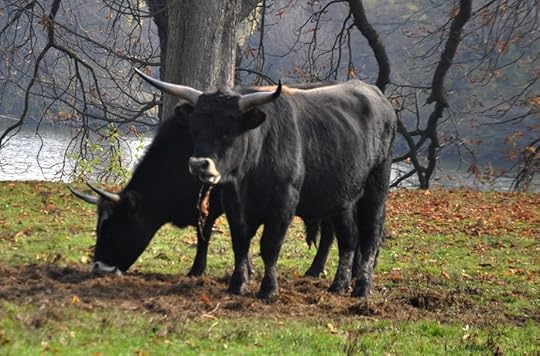
Heck would continue his experiments as the Nazis rose to power, creating breeds of wild horses similar to those of long ago. And by 1941, when the Nazis took over the Warsaw Zoo, Heck chose the animals he wanted to bring home to Germany. He enjoyed hunting and killing the others.
But his science was bunk. The idea of back breeding results in animals that may resemble others, but genetically, they are nothing like the real thing.
Most of the wild animals they created were eventually killed when the Allied Forces invaded Germany. In Berlin, animals wandered through the war-torn rubble, only to be killed by bombs or guns, then eaten by starving locals.
The surviving Heck animals now live in zoos, and Heck himself lived until the 1980s. Many were horrified to learn how the Nazi described the hunting of the American bison, which he shared in his autobiography in 1952:
“One of the most shocking chapters in the history of our day is that concerned with the almost complete destruction…of a whole great species, full of vitality, simply through human folly and greed, ambition and blind destructiveness,” he wrote.
Once again, he was talking about the American bison.
It’s not exactly Jurassic Park. But it’s not that far off, either.
By Ryan Clark, contributor for Ripleys.com
Source: The Nazis’ Attempt At Jurassic Park, Was It Possible?
Dinosaur Dandruff Was A Thing
Featured in Ripley's Believe It or Not!

[May 27-June 2nd, 2018] An eagle and fox fight over a rabbit, scientists warn against roasting marshmallows over lava, and dinosaurs had dandruff.
Eagle Vs. Fox
Photographer Zachary Hartje was on the San Juan Islands of Washington state following a group of young foxes when a nature battle of epic proportions unfolded in front of him. A fox had just caught a bunny when a blur of brown feathers descended from the air to snatch his freshly-caught lunch away. The fox didn’t let go and was carried upwards of 20 feet into the air. They fought in the air for a moment, before the fox dropped to the ground hungry.
Geologists Weigh In On Volcanic S’mores
While the world has its eyes trained on the erupting Kilauea volcano on the island of Hawaii, many people began wondering the same thing: Can you roast a marshmallow over molten lava? After much speculation, the U.S. Geological Survey weighed in. Even if you had a long enough stick to protect yourself from the heat, they say it still isn’t safe. The marshmallow would come out tasting bad and poisonous.
Erm…we’re going to have to say no, that’s not safe. (Please don’t try!) If the vent is emitting a lot of SO2 or H2S, they would taste BAD. And if you add sulfuric acid (in vog, for example) to sugar, you get a pretty spectacular reaction.
— USGS Volcanoes
CARTOON 06-01-2018
May 31, 2018
The Spirit of Salem: Lori Bruno
Featured in Ripley's Believe It or Not!
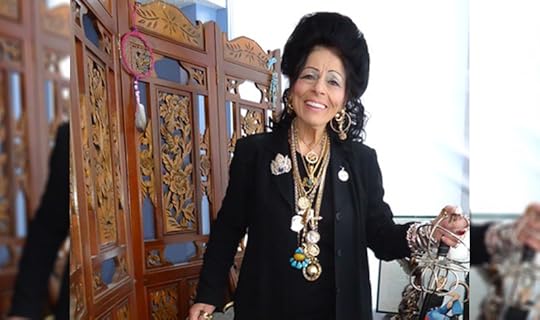
“I love you,” she says, nonchalantly, before ending a phone conversation with someone she’s never met.
And the thing is, you really believe she means it.
But you can forgive others if they don’t, or if they tend to question most of the things Lori Bruno has to say, like when she claims she can heal sick animals or when she says she can predict your future.
Still, what else would anyone expect from the self-proclaimed Witch of Salem?
“The word witch means wisdom, integrity, truth, courage, and honor,” she says. “I coined that term when I was 18 years old. So yes, I am a witch.”
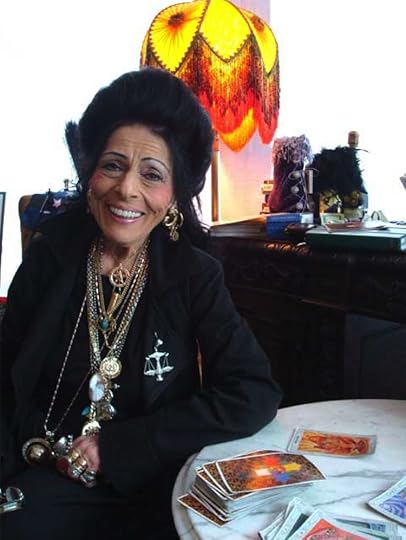 Meet Lori Bruno, the 78-year-old Hereditary High Priestess; Elder of the Sicilian Strega line of the Craft of the Wise; and founder and Head Mother of Our Lord and Lady of the Trinacrian Rose Church, Inc., in Salem, Massachusetts.
Meet Lori Bruno, the 78-year-old Hereditary High Priestess; Elder of the Sicilian Strega line of the Craft of the Wise; and founder and Head Mother of Our Lord and Lady of the Trinacrian Rose Church, Inc., in Salem, Massachusetts.
Her website will tell you that when she was born in 1940, “she was born into one of the last lines of oral traditional teachings which are handed down from generation to generation through the family.”
With a wide smile, high black hair and rings on every finger, she doesn’t portray the image of a witch. She instead looks like the world’s friendliest grandmother, albeit one with boundless energy who dresses all in black.
She has many jobs, like running her church, for one, which she has called “non-denominational place of spiritual development and learning.” She also serves as the head of a charitable organization and owner of a shop, Magika, on Federal Street, where she and others can “solve problems,” involving those of love, business, and even legal cases while teaching the “ancient traditions” and selling an assortment of Witchcraft books and practitioner items.
Salem is the perfect place for such things, as it was home to the 17th-century witch trials, and has built an entire tourism industry around the occult. During summers, and especially every October, spectators come to visit the town’s many occult museums and shops.
But Bruno offers something more, she says.
“This is not a carnival, or schtick, or B.S.,” she says. “We have helped so many people. There was once a colonel in the U.S. Army who came to me and I was able to save his marriage.”
Recently, her own dog was feeling ill, she says. She took the pup in her lap, closed her eyes, and she says she was transported in her mind to the “most beautiful place.”
“The next day, the dog was running around, just fine, and my husband asked what I did,” she says. “I told him it was simple—I did what needed to be done.”
Some customers walk in for readings, while others make appointments. In her shop, they will see symbols of all religions, along with a picture of the word “Imagine.” (Bruno is a big John Lennon fan). And she finds it easy to describe what she calls her “powers.”
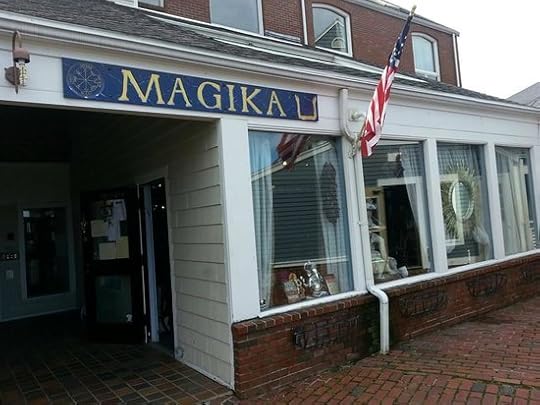
Photo courtesy of TripAdvisor
“It’s positive energy to heal and create good,” she says. “We believe all religions should come together and enhance the universe in peace. We want to take care of humanity. We want you to know that if you do evil, you better remember—evil will come back and knock on your door. If you do good, good will come back to you. The power is love.”
Over the years, she has gained notoriety for these efforts, as well as others, appearing on television, in newspapers and on podcasts across the world. She will lecture to other mediums on her craft and assist families and law enforcement officials (for no pay) in searches for missing loved ones.
Of course, she has also made headlines for other reasons, both good and bad. Like in 2015, when she sued a former business associate who was a self-proclaimed warlock. “Salem Witch Sues World’s Best-Known Warlock for Harassment” a Huffington Post headline read. Naturally, Bruno won the case.
And there was the time, in 1996, when then-Massachusetts Governor Michael Dukakis presented Bruno with the “Protection of the Children of the Commonwealth,” award for her work as a foster parent. The award still hangs in her shop.
But for all the good she’s done, there will always be doubters.
“That’s quite alright,” she says. “Whether you put a label on yourself, if you still love, the God of light sees your heart, and in the heart is the soul.”
Bruno lives in Salem with her husband of 40 years, 77-year-old Luciano Sforza, and their six dogs: four Pomeranians, a poodle, and a chihuahua. The couple has two children and four grandchildren, and one—a granddaughter—is poised to take Bruno’s place, she says.
“She has the gift,” she says. “She will follow in my footsteps.”
But not for a while. Bruno still answers phone calls late into the night, helping others with their problems. And while she’s busy doing that, she wants to help change the perception of witches.
“So many women think they’re witches, and they’re all about garish clothes, their boobs hanging out,” she says. “That’s not what we’re about at all. They hop on the witch bandwagon to make money. And that’s not it—it’s about making peace in this world.”
And never have we needed it more, she says.
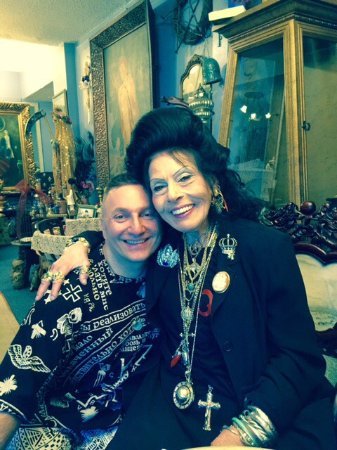
Photo courtesy of TripAdvisor
“We hear so much about making America great again,” she says. “But our country is being filled with hate. We need to make it love again! We need to make it care and make it joyful again! The love has to come back!”
Bruno is ready to keep doing her part.
“I was very lucky to be in this family,” she says. “I don’t know why they did it, but I thank the gods they did.”
With the conversation nearing its end, she departs in her normal fashion, whether she truly knows you or not. Because, after all, she sees it as her mission to spread a little tenderness around. On the other hand, maybe she knows you better than you realize.
“I love you,” she says. “Love to your kids. And love to your whole family. I just love you all.”
By Ryan Clark, contributor for Ripleys.com.
Source: The Spirit of Salem: Lori Bruno
How Fake Was Orson Welles’s War Of The Worlds?
Featured in Ripley's Believe It or Not!
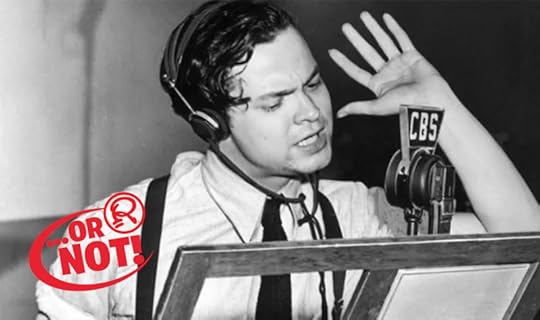
Or Not
In today’s world many misconceptions have been perpetuated—becoming modern day “facts”—when, in reality, myths and hearsay have taken over. Sorry to burst your bubble, but in this weekly column, Ripley’s puts those delusions to the test, turning your world upside down, because you can’t always…Believe It!
Today: War of the Worlds hysteria.
War of the Worlds
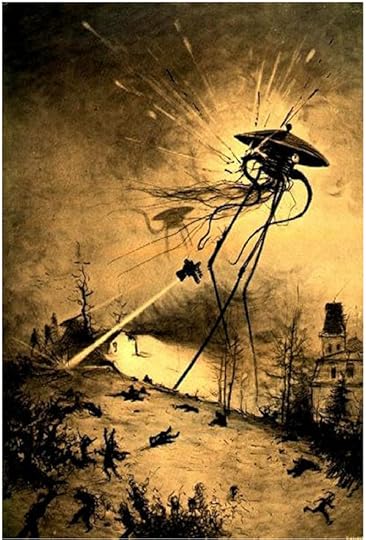 The day before Halloween in 1938, Orson Welles made his famous radio broadcast of The War of the Worlds. Newspapers reported mass hysteria across the country as people apparently mistook the broadcast for real news instead of theater, but are the tales of shock, traffic, and even suicide true? According to some first-hand accounts and radio polls, not only did a minuscule number of people even hear the broadcast, but the streets of the invaded state of New Jersey were empty.
The day before Halloween in 1938, Orson Welles made his famous radio broadcast of The War of the Worlds. Newspapers reported mass hysteria across the country as people apparently mistook the broadcast for real news instead of theater, but are the tales of shock, traffic, and even suicide true? According to some first-hand accounts and radio polls, not only did a minuscule number of people even hear the broadcast, but the streets of the invaded state of New Jersey were empty.
Orson Welles’s own intentions with the show are steeped in falsehoods. For one thing, the broadcast was a part of a show that had already been on the air for 12 weeks. Titled Mercury Theatre on the Air, the show’s whole premise was that it adapted classic novels like Sherlock Holmes and Treasure Island. The company decided to do War of the Worlds by H.G. Wells in the style of a news broadcast because they thought it was far too boring and corny as a drama.
The broadcast was bookended with sponsors and the shows name, and Welles himself said it was a pre-Halloween joke while on the air. Likewise, the show wasn’t all that popular. It was up against a more famous comic-variety show, and anyone changing stations would have heard regular broadcasts—not news of an alien invasion.
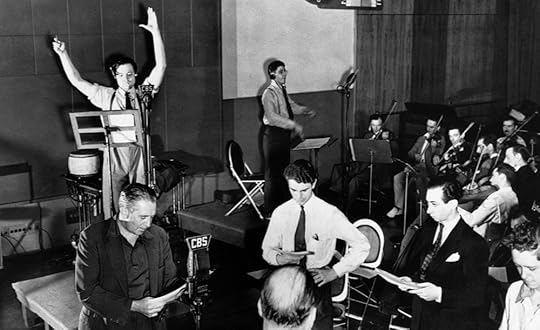
According to a ratings survey that took place during the show, only 2% of survey participants were listening to Welles, and all of them answered they were listening to CBS—the station airing the show, not even specifically the Mercury Theatre program. Furthermore, none of these respondents said they were listening to the news, but instead answered they were listening to a play.
So if barely anyone heard the program, and those who did weren’t caught in mad hysteria, why has the legend of that fateful night grown so big? Blame newspapers.
A War For Words
In 1938, radio was fast-becoming America’s source for news and entertainment. By winning the nation’s ears, radio was also winning advertisers’ money—money that had long been spent on newspapers.
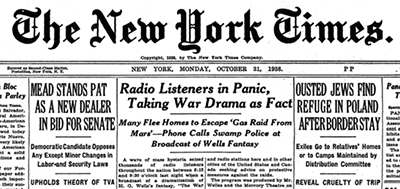
According to some researchers, the newspaper reports of mass hysteria were simply meant to tighten restrictions on radio broadcasters. The Federal Communications Commission indeed launched an investigation into the show, but no one was penalized. They did ban programs from impersonating newscasts, but this was at a time when you couldn’t even do impressions of the president on air.
Despite the apparent facts of the time, the tale of a frightful radio broadcast seems to have become too alluring to dismiss as purely a hoax, and even Orson Welles himself capitalized on the media attention to grow his career. People who said they were on the edge of their seats, or excited in the way they might be for a superhero blockbuster are now regarded as frightened fools. Despite the alleged suicides being debunked, and hospital records showing no reported injuries, the story of the War of the Worlds has become important to the American identity, even as a hoax.
How Fake Was Orson Welles’s War of the Worlds?
Featured in Ripley's Believe It or Not!

Or Not
In today’s world many misconceptions have been perpetuated—becoming modern day “facts”—when, in reality, myths and hearsay have taken over. Sorry to burst your bubble, but in this weekly column, Ripley’s puts those delusions to the test, turning your world upside down, because you can’t always…Believe It!
Today: War of the Worlds hysteria.
War of the Worlds
 The day before Halloween in 1938, Orson Welles made his famous radio broadcast of The War of the Worlds. Newspapers reported mass hysteria across the country as people apparently mistook the broadcast for real news instead of theater, but are the tales of shock, traffic, and even suicide true? According to some first-hand accounts and radio polls, not only did a minuscule number of people even hear the broadcast, but the streets of the invaded state of New Jersey were empty.
The day before Halloween in 1938, Orson Welles made his famous radio broadcast of The War of the Worlds. Newspapers reported mass hysteria across the country as people apparently mistook the broadcast for real news instead of theater, but are the tales of shock, traffic, and even suicide true? According to some first-hand accounts and radio polls, not only did a minuscule number of people even hear the broadcast, but the streets of the invaded state of New Jersey were empty.
Orson Welles’s own intentions with the show are steeped in falsehoods. For one thing, the broadcast was a part of a show that had already been on the air for 12 weeks. Titled Mercury Theatre on the Air, the show’s whole premise was that it adapted classic novels like Sherlock Holmes and Treasure Island. The company decided to do War of the Worlds by H.G. Wells in the style of a news broadcast because they thought it was far too boring and corny as a drama.
The broadcast was bookended with sponsors and the shows name, and Welles himself said it was a pre-Halloween joke while on the air. Likewise, the show wasn’t all that popular. It was up against a more famous comic-variety show, and anyone changing stations would have heard regular broadcasts—not news of an alien invasion.

According to a ratings survey that took place during the show, only 2% of survey participants were listening to Welles, and all of them answered they were listening to CBS—the station airing the show, not even specifically the Mercury Theatre program. Furthermore, none of these respondents said they were listening to the news, but instead answered they were listening to a play.
So if barely anyone heard the program, and those who did weren’t caught in mad hysteria, why has the legend of that fateful night grown so big? Blame newspapers.
A War For Words
In 1938, radio was fast-becoming America’s source for news and entertainment. By winning the nation’s ears, radio was also winning advertisers’ money—money that had long been spent on newspapers.

According to some researchers, the newspaper reports of mass hysteria were simply meant to tighten restrictions on radio broadcasters. The Federal Communications Commission indeed launched an investigation into the show, but no one was penalized. They did ban programs from impersonating newscasts, but this was at a time when you couldn’t even do impressions of the president on air.
Despite the apparent facts of the time, the tale of a frightful radio broadcast seems to have become too alluring to dismiss as purely a hoax, and even Orson Welles himself capitalized on the media attention to grow his career. People who said they were on the edge of their seats, or excited in the way they might be for a superhero blockbuster are now regarded as frightened fools. Despite the alleged suicides being debunked, and hospital records showing no reported injuries, the story of the War of the Worlds has become important to the American identity, even as a hoax.
CARTOON 05-31-2018
May 30, 2018
The Dystopian Program Of Practice Babies
Featured in Ripley's Believe It or Not!
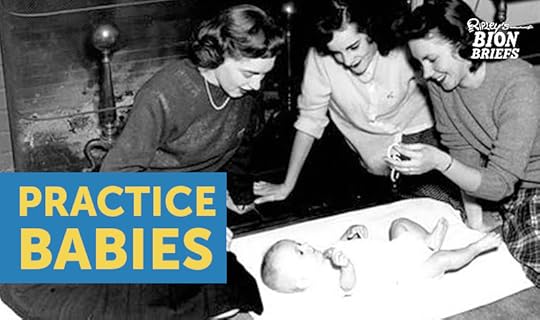
As the medical and scientific revolutions felt new wind in their sails at the end of World War I, America’s confidence in science and research grew. At the height of this craze, even the age-old tradition of motherhood became something that was taught at a University, leading to the use of practice babies.
As part of many universities’ Home Economics Departments—programs meant to teach women how to efficiently run a household—practice babies allowed young women to hone their skills at parenting infants. From 1920 to 1970, 50 colleges from around the country would borrow babies out of orphanages as no-contest volunteers.
Babies were named by the universities, with Cornell giving the surname Domecon (Domestic Economics) to all of its children, and the University of Illinois naming children after the buildings they were placed in.
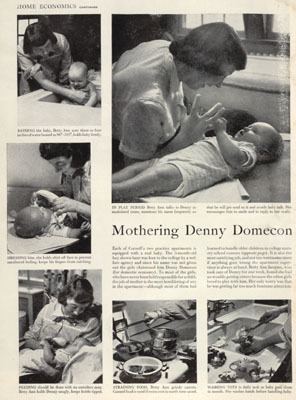
In some programs, babies were rented out for a few weeks, but in others, dozens of women would take turns with each baby. A toddler might be put to bed by one “mom” only to be woken up by another. Strict schedules had to be kept, ensuring that everyone had their turn, and when the children had grown up past their usefulness, they were returned to the orphanages.
As young women were taught the finances of a residence and the chemistry of cooking, so too were they instructed in the caring for of children. In the short term, practice babies benefited from the extra food and care. Many orphans were acquired as young as possible and were often malnourished. The care of a dozen amateur mothers provided ample attention, but in retrospect, researchers worry how this might have affected their ability to form attachments.
Despite their worry, no one knows the fates of these children. To date, no studies have followed up on the lives of the Domecons or the rest of the practice babies.
CARTOON 05-30-2018
Ripley Entertainment Inc.'s Blog
- Ripley Entertainment Inc.'s profile
- 52 followers






